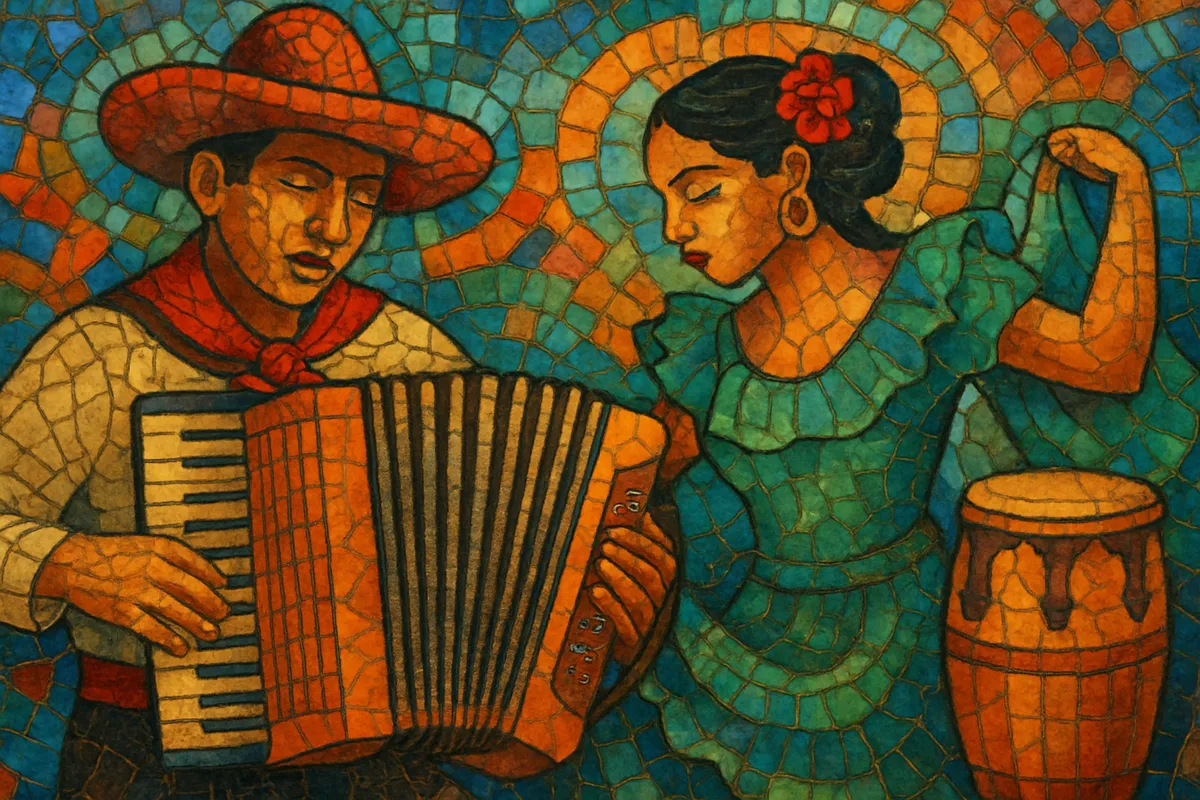Cumbia mexicana is the Mexican adaptation of Colombian cumbia, reshaped by local tropical orchestras, border accordion traditions, and urban DJ (sonidero) culture.
It typically features a steady 2/4 cumbia groove, melodic accordion or organ riffs, bright brass lines, and romantic or festive lyrics.
Over time it diversified into regional styles such as cumbia sonidera (Mexico City), cumbia norteña (northern Mexico with accordion-driven arrangements), and the slowed-down cumbia rebajada (Monterrey DJ culture), while also crossing over into grupera and banda contexts.
Today it is a cornerstone of Mexico’s popular dance music, equally at home in neighborhood parties, massive sonidero sound-system dances, and pop collaborations.
Colombian cumbia reached Mexico by mid‑century via records, touring groups, and tropical orchestras in Mexico City. Local bandleaders arranged cumbias in big‑band/tropical formats alongside danzón, bolero, mambo, and cha‑cha‑chá, establishing a distinctly Mexican sound. Groups like Los Socios del Ritmo (founded 1962 in Campeche) helped anchor cumbia in national dance halls and radio.
In the 1970s, artists such as Rigo Tovar blended cumbia with electric guitars, organs, and rock aesthetics, pushing the music into mass popularity. In the north, accordion-led ensembles shaped what became cumbia norteña, drawing on norteño instrumentation and songcraft. Parallel scenes in Mexico City’s barrios cultivated “sonidero” sound-system culture, where DJs popularized Colombian and Mexican cumbias, created extended mixes, and fostered a participatory dance environment.
Mexico City sonideros and Monterrey DJs developed local flavors—most notably cumbia rebajada, a slowed‑down style born from pitch‑altered turntables that emphasized groove and hypnotic feel. Los Ángeles Azules crystallized a polished, romantically inflected cumbia sonidera with orchestral keyboards and brass, while Celso Piña (“El Rebelde del Acordeón”) popularized accordion‑driven cumbia across rock and alternative circles, collaborating widely and bringing the genre to new audiences.
Collaborations between cumbia bands and pop/rock artists reignited mainstream attention, with high‑profile symphonic and festival appearances. The genre now circulates globally through streaming and DJ culture, yet remains rooted in community dances, local radio, and the aesthetics of barrio posters and sonidero shout‑outs, maintaining its identity as Mexico’s essential party groove.


